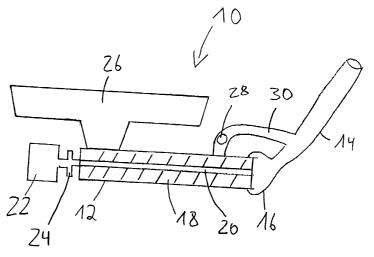Note: Claims are shown in the official language in which they were submitted.
Claims
1. Process for conveying construction materials which
are flowable in the heated state by means of a pump (12,
42, 90, 110, 130, 152) and a pipe (14, 70, 80, 154)
connected to this pump (12, 42, 90, 110, 130, 152),
wherein the pump (12, 42, 90, 110, 130, 152) and the pipe
(14, 70, 80, 154) are heated.
2. Process according to claim 1, wherein a common
heating device or heating apparatus (28, 95, 116) is
provided for heating the pump (12, 42, 90, 110, 130, 152)
and the pipe (14, 70, 80, 154).
3. Process according to claim 2, wherein the common
heating device (28, 95, 116) is a bar-type burner with
which the pump (12, 42, 90, 110, 130, 152) is heated to
begin with and the pipe (14, 70, 80, 154) is heated with
the exhaust air produced during the heating of the pump
(12, 42, 90, 110, 130, 152).
4. Process according to one of claims 1 to 3, wherein
gaseous and/or liquid heat carriers are used to heat the
pump (12, 42, 90, 110, 130, 152) and the pipe (14, 70,
80, 154).
5. Process according to claim 4, wherein the heat
carriers are passed through heating channels (76) for the
heating.
6. Apparatus for conveying construction materials which
are flowable in the heated state by means of a pump (12,
2
42, 90, 110, 130, 152) and a pipe (14, 70, 80, 154)
connected to this pump (12, 42, 90, 110, 130, 152),
wherein at least one heating device (28, 95, 116) is
provided for heating the pump (12, 42, 90, 110, 130, 152)
and the pipe (14, 70, 80, 154).
7. Apparatus according to claim 6, wherein a common
heating device (28, 95, 116) is provided for heating the
pump (12, 42, 90, 110, 130, 152) and the pipe (14, 70,
80, 154).
8. Pump for conveying construction materials which are
flowable in the heated state, wherein a heating device
(28, 95, 116) is provided for the heating.
9. Pump according to claim 8, wherein heating channels
(76) are provided for heating the construction materials
which are to be conveyed by means of the pump (12, 42,
90, 110, 130, 152).
10. Pump according to claim 8 or 9, which builds up the
pressure needed to convey the construction materials by
means of a worm conveyor (20, 52, 94, 114).
11. Pump according to claim 10, wherein the worm
conveyor (20, 52, 94, 114) is constructed so that a heat
carrier can be passed through it.
12. Pump according to claim 10 or 11, wherein the worm
conveyor (20, 52, 94, 114) converges conically at one of
its ends.
13. Pump according to one of claims 10 to 12, which
comprises an inner tube (132) and an outer tube (134).
3
14. Pipe for conveying construction materials which are
flowable in the heated state, wherein a heating device
(28, 95, 116) is provided for the heating.
15. Pipe according to pipe 14, wherein heating channels
(76) are provided surrounding the pipe (14, 70, 80, 154).
16. Pipe according to claim 14 or 15 made up of sections
which are connectable to one another and adapted to be
heated separately.
17. Use of an apparatus (10, 40, 150) (28, 95, 116)
according to claim 6 or 7 for conveying construction
materials which are flowable in the heated state.
